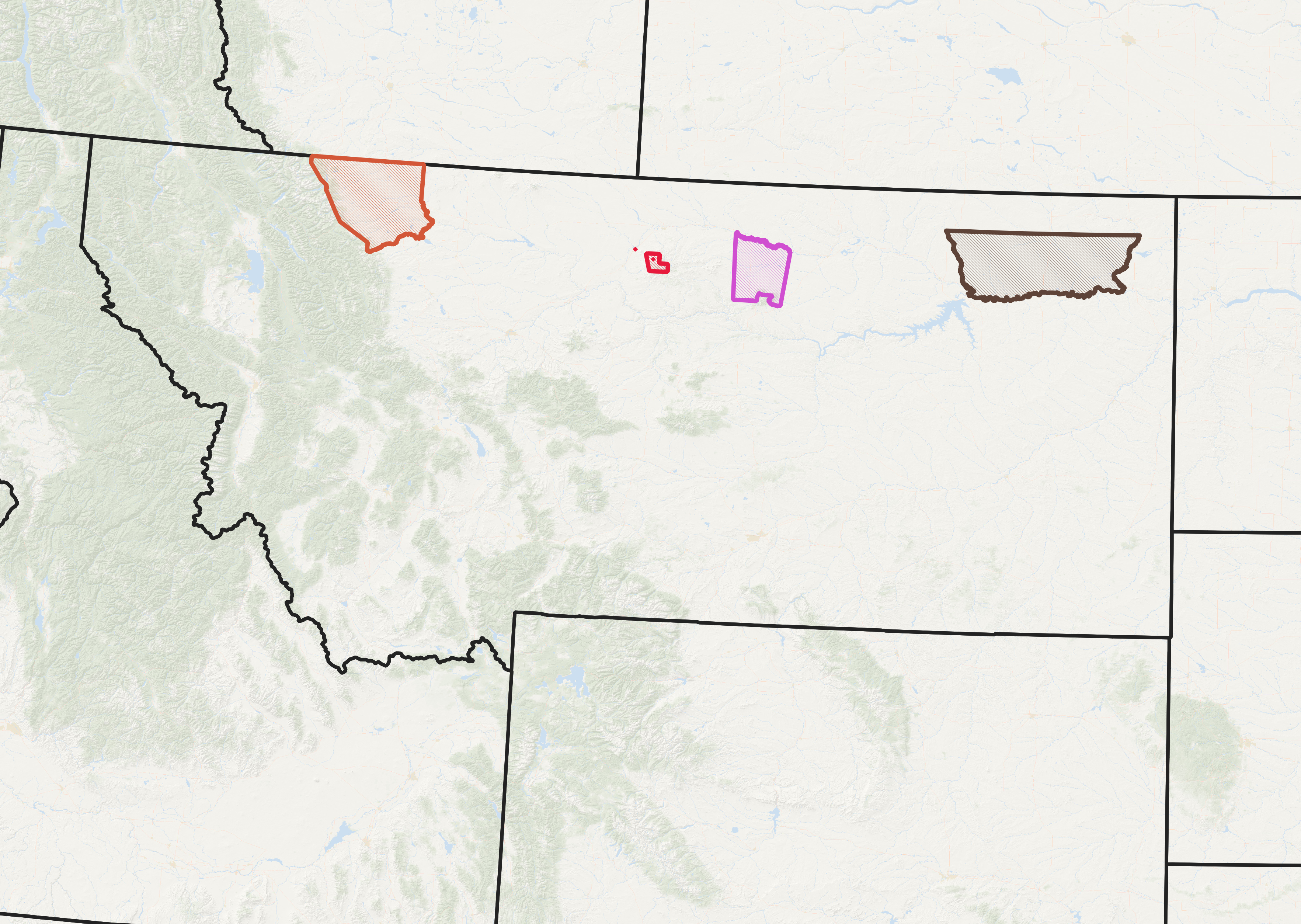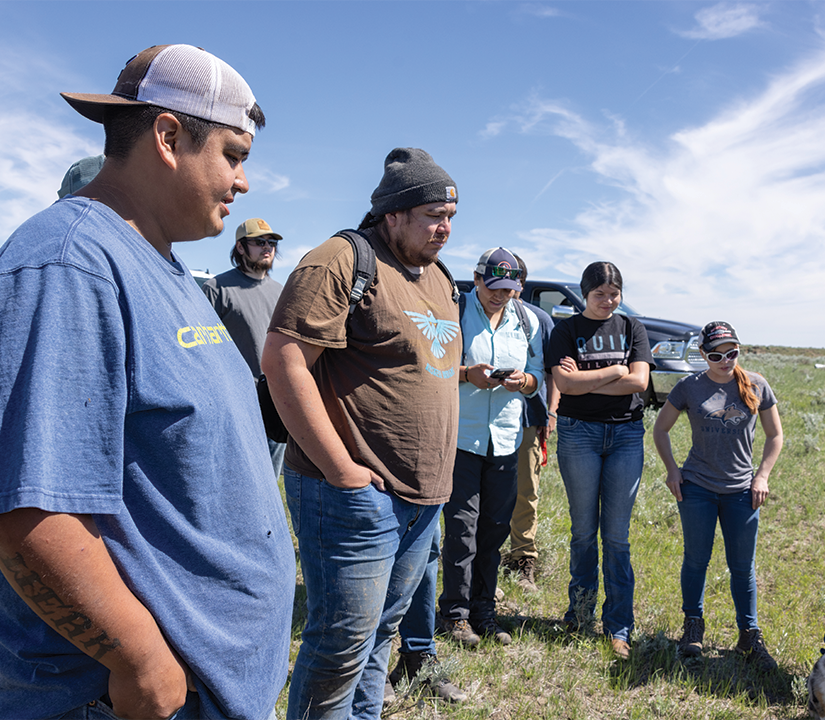Partnering With Native American Communities for a Shared Future
North America’s first Intertribal Grassland Network is a collaboration between four tribal communities in Montana, our Great Plains Science Program, and other project partners.
Great strides have been made in the reintroduction of bison to Tribal lands, thanks in part to the leadership of Tribal representatives and support from non-governmental organizations. Efforts led by Native American Nations to restore Plains bison to tribal lands can improve the health of prairie ecosystems. These efforts also support cultural, spiritual, and economic activities that are central to Native American peoples’ identities and livelihoods.
However, recovering bison populations is not enough to improve these communities’ socio-ecological potential. The Great Plains Science Program supports and embraces collaborations between Tribes that restore the environment and empower communities.

Image shows the locations of the Blackfeet (in orange), Rocky Boy's (red), Fort Belknap (purple), and Fort Peck (brown) Indian communities within Montana.
In response to challenges and opportunities, four tribal communities in Montana (Blackfeet, Fort Belknap, Fort Peck, and Rocky Boy’s Indian Reservation) and the Smithsonian’s National Zoo and Conservation Biology Institute, along with groups like WWF, Defenders of Wildlife, American Prairie, Montana State University, and community groups, have initiated a collaborative effort to establish North America’s first Intertribal Grassland Network.
These communities have faced exclusionary policies for decades, leading to fragmented socio-ecological systems with poverty rates two to three times higher than nearby rural areas. Additionally, they are considered particularly vulnerable to climate change, emphasizing the pressing urgency for innovation.

The Intertribal Grassland Network is a new group that aims to address the socio-ecological challenges confronting Native American communities today and in the future. Anchored by bison restoration, a nature-based solution, it offers promising avenues for revitalizing cultural connections to nature, improving livelihoods, and contributing to regional and global conservation objectives. Through research, community engagement, and flexible educational opportunities, the Network seeks to improve livelihoods, share knowledge and help communities find solutions for land stewardship challenges for generations to come.









